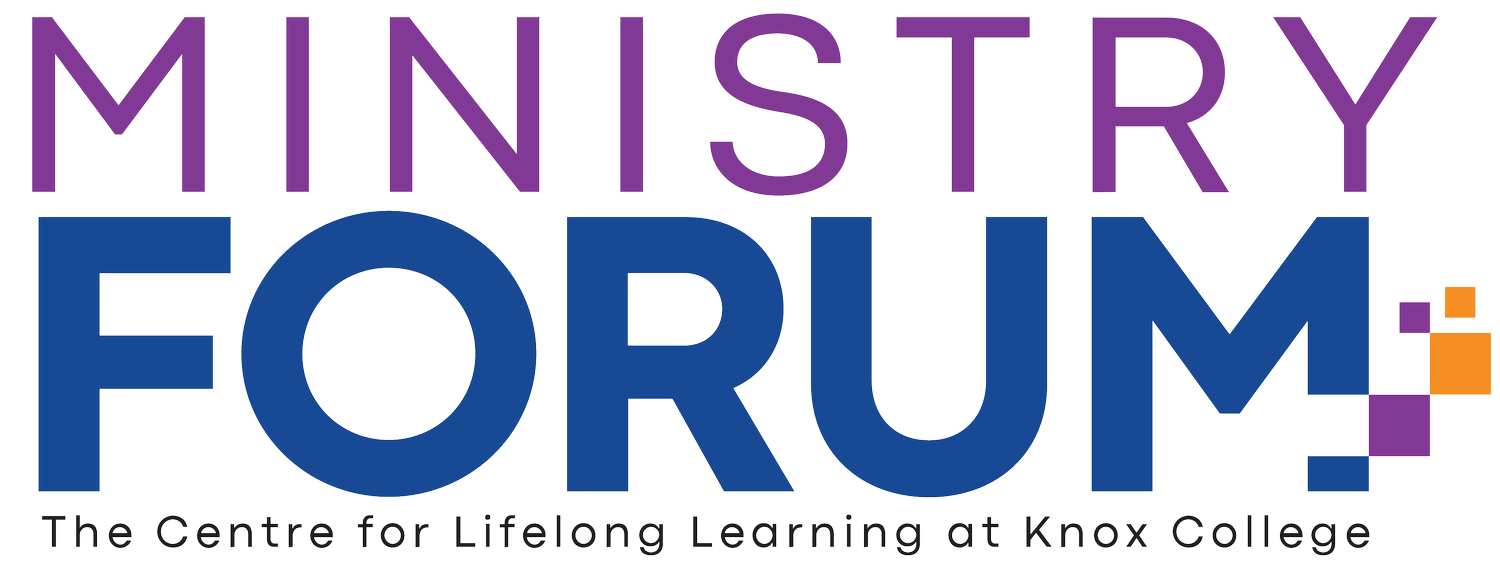Is Your Ministry Team Dysfunctional?
As a part of our Ministry Forum Annual Planning Retreat, we identified that one of the interventions that may support today’s ministry leaders most right now is equipping healthy and supportive teams. This insight seemed to tick so many boxes related to the challenges of leadership we hear often in our work. My Central Canada Road Trip in June allowed me the privilege of hearing stories and bearing witness to ministry leaders who are surrounded by supportive and engaged team players. It was amazing to hear, even in the unique timbre of voice, from ministry leaders who celebrated the people to whom they minister alongside. They did not feel alone. More to come on how our Team hopes to engage this particular opportunity.
Early this year, as a part of Knox College’s Senior Leadership Team (SLT) retreat, I was invited to share some insights from Patrick Lencioni’s “The Five Dysfunctions of a Team” - a book that I had encouraged our leadership to read. Let me state from the outset that the title of the book can be jarring since it appears to label the reader as a part of the dysfunction which has negative connotations. Let me assure you, dear reader, that like all teams (and I’d especially argue this is needed in the teams that today’s ministry leaders find themselves in) the College’s Senior Leadership benefitted from learning more about the qualities that makes an effective and healthy team. The book wasn’t meant as a label or judgement but more of an invitation to learn… and who better to invite that learning than the College’s Director of Lifelong Learning.
I’ve appreciated the work of Patrick Lencioni for decades. I’ve read a lot of his books and regularly listen to his podcast, At The Table. In particular, I appreciate how he captures the reader’s attention in the books he writes by framing the concepts around a business fable as he calls them. It isn’t a scholarly work but more of a story that is told where you might see yourself or others as one of the characters demonstrating in a very real way how the model he will eventually extrapolate operates in our human systems. Lencioni's "The Five Dysfunctions of a Team" presents a model for understanding why teams fail and how to build more effective collaboration. The book identifies five interconnected dysfunctions that prevent teams from achieving their potential: absence of trust, fear of conflict, lack of commitment, avoidance of accountability, and inattention to results. Lencioni argues that these dysfunctions form a hierarchy, where each builds upon the previous one, creating a cycle that undermines team performance.
The foundation of Lencioni's model is trust, which he defines as team members' willingness to be vulnerable with one another about their weaknesses, mistakes, and fears. Without this psychological safety, teams cannot engage in productive conflict around ideas, leading to artificial harmony that prevents real issues from being addressed. This lack of healthy debate then prevents genuine buy-in and commitment to decisions, since team members haven't had the opportunity to voice their concerns and feel heard. When commitment is absent, team members are reluctant to hold each other accountable for behaviours and performance standards. Finally, without accountability, individuals tend to focus on their personal success rather than collective team results. Lencioni provides practical tools for overcoming each dysfunction, emphasizing that building a cohesive team requires deliberate effort and ongoing attention from leadership.
Following my presentation on the basics of “The Five,” the College’s SLT invited me to continue to create space for reflection and learning in these areas at future SLT meetings. Over the next four months, we would take 30 minutes at the beginning of our regular meetings (we actually decided to start a half hour earlier) to watch a video or two that I had selected and then offer our thoughts, feedback, and reflections on how it related to our experiences of leadership. Our leaders spoke of how it opened up space for conversations that had never happened before and new insights into the personalities and engagement of our team members. Concluding in early June, the SLT reflected afterwards that it was a helpful and meaningful exercise that will inform how we engage in our future meetings and leadership responsibilities.
I’d encourage you to invite the teams that you are privileged to be a part of to read The Five Dysfunctions of a Team. Tell them, Knox College’s Director of the Centre for Lifelong Learning recommended it… and then if you think it would be a helpful exercise, invite them to add a time of learning and sharing into the opening of your agenda each time you meet. We’ve curated a YouTube Playlist from the videos that I shared with Knox’s SLT. You will find that we didn’t spend much time on the later three dysfunctions… but more focused attention was placed on the foundational ones of TRUST and CONFLICT. It is my opinion that these two… and especially trust are the secret sauce that can be transformational to the teams we encounter in various ministry contexts.
Videos Included:
The Five Dysfunctions of a Team (introduction)
How to Better Handle Confrontation with Simon Sinek
This is What Makes Employees Happy At Work
Toxic Workplace Culture when Employees No Longer Care
Office Space Clip)- I didn't share this one during our time together - but it is a funny one about workplace culture. If you've seen the movie, Office Space you know what I'm talking about.
I hope this exploration - like ours at the College - will be time well spent and may uncover new insights that may lead to a shift in how you as a ministry leader engage your team and how others at the table work together building trust along the way. We’d love to hear from you on this.




